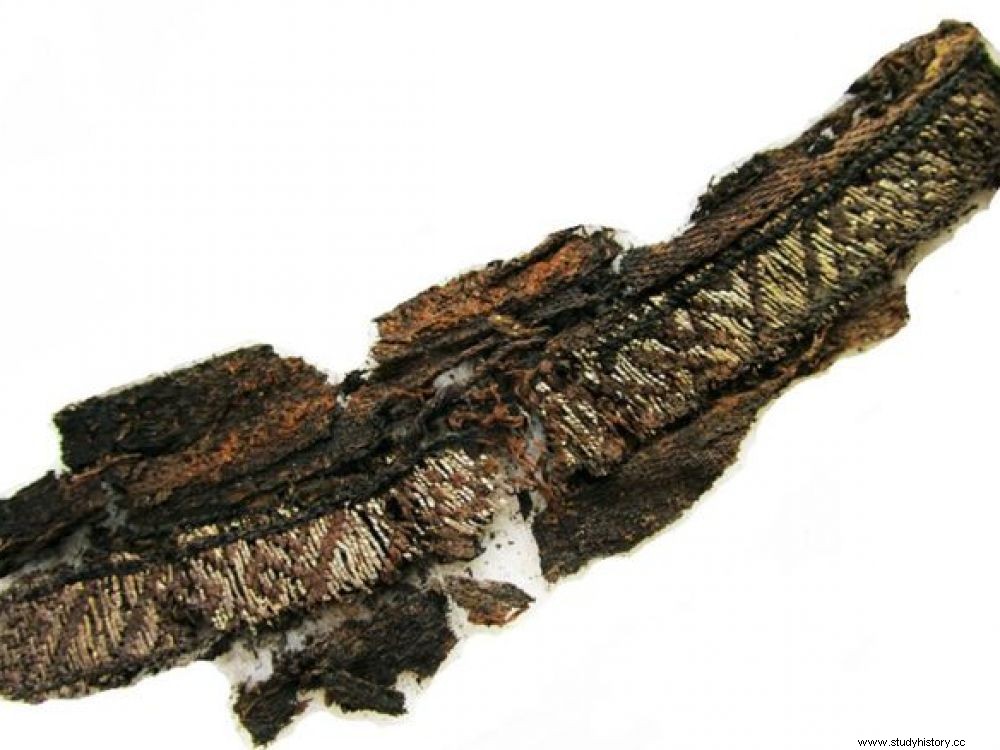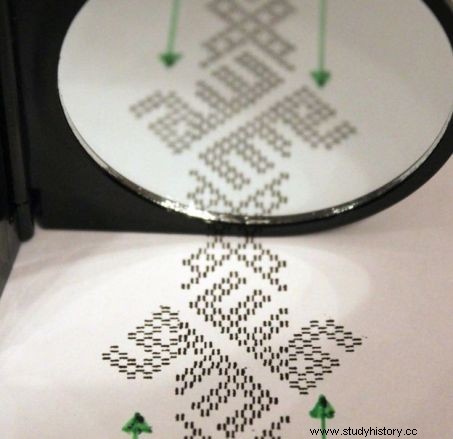Viking Age silks discovered in Swedish cemeteries had Arabic calligraphy in their wefts.

Fragment of woven ribbon from a grave in Birka (Sweden). What were previously thought to be typical Viking Age patterns turned out to be Kufic characters.
"While I was examining fragments of Viking period textiles* for an exhibition**, I discovered for the first time in the weft of one of them Kufic calligraphy (the oldest form of Arabic calligraphy, Ed) and especially the names of Allah and Ali...!" , enthuses Annika Larsson, whose discovery, made in the spring of 2017, has just been made public.
By observing a woven ribbon of silk and silver, this archaeologist from the Department of Archeology and Ancient History at the University of Uppsala (Sweden) has indeed noticed that geometric patterns actually resemble the Arabic writing present on the mosaics of certain funerary monuments in Central Asia. "Which confirms intense commercial exchanges with this region from which came the silks intended for the tombs of the Viking era" , she told Sciences et Avenir .
For several years, the archaeologist has indeed been tirelessly studying textiles from the Viking period:hundreds of fabrics, woolens and silks have thus been put under the magnifying glass of his binocular. After a thesis on "The change in the clothing of Viking warriors around the year 1000", the young woman decided in 2012 to revisit all the textile elements found in the burials of the Viking era, starting with those from grave ships unearthed in central and eastern Scandinavia.
"In the Quran, it is written that the inhabitants of Paradise will wear silk garments"

Enlarged pattern of Kufic calligraphy with the name of Allah found on a Viking Age silk textile. Credit Annika Larsson
And in particular the many discoveries made by Hjalmar Stolpe at the end of the 19th century in burials at Malardalen and Gamla near Uppsala, in which no one had really been interested until then. "It is only very recently that Sweden has trained textile specialists", she explains. This is how she was able to determine the widespread presence of oriental silk in these Viking Age tombs.
"In the Koran, it is written that the inhabitants of Paradise will wear silk garments, which may explain the abundance of this material in the burials, she adds. Funerary customs of the Viking Age seem to have been influenced by Islam and the idea of eternal life in Paradise after death" . This link between the Viking worlds and Islam was already known to specialists. In 2015, the name of Il-la-lah” (“For Allah”) was found delicately engraved on a 9th century ring, found in a burial in Sweden.
*The Viking Age" (793-1066) (concerns various societies of present-day Denmark, Norway and Sweden)
** Exhibition on textiles from the Viking Age at the Enköping Museum, Sweden. What were previously thought to be typical Viking Age patterns in silver turned out to be Kufic geometric characters.
